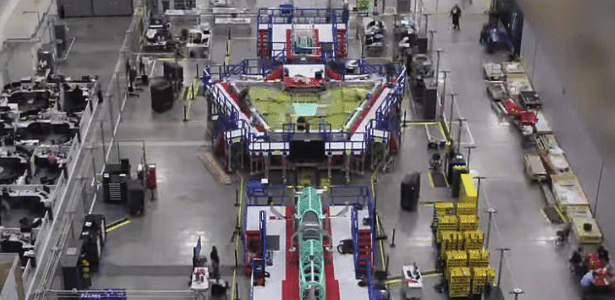
NASA completed in California (USA), the construction of the supersonic aircraft X-59, nicknamed “Son of Concorde”. With technology that silences the bangs of supersonic aircraft, the space agency will launch its first test flight next year.
The US space agency has shared a time-lapse video of the plane’s construction, which has been taking place since 2019 at the Lockheed Martin Skunk Works warehouses in Palmdale, California.
The vessel is built with Quiet SuperSonic technology, which makes it possible to silence the sonic boom it produces while cruising at 925 mph (about 1,500 km/h). The speed of sound is 1234 km / h.
The 57-second video shows the evolution of the fuselage that houses the cockpit, and the 30-foot-wide wing that holds the fuel systems and parts of the control systems.
At the end of the video, you can see the montage of the tail. This part is made of heat-resistant materials, which protect the aircraft from the heat emitted by the X-59’s GE F414 engine, located on top of the aircraft.
“We have now gone from having a set of separate parts placed in different parts of the factory floor to eventually having an aircraft,” Jay Brandon, NASA’s chief engineer for the Low Boom Flight Demonstrator (LBFD) project, said in a statement.
The X-59, first announced in 2018, was built by NASA in collaboration with Lockheed Martin, which said the new model would be a milestone in aviation history because it would enable supersonic commercial travel to break out of the level of ideas and verification.
Contract worth 1.28 billion Brazilian riyals
NASA awarded the American Aeronautics and Space Corporation Lockheed Martin has signed a $247.5 million ($1.28 billion) contract to build the X-59, which is supposed to be completed this year and begin test flights in 2022.
The team started the project by designing the wing, tail assembly and fuselage to ensure they fit together perfectly.
The fuselage (the front part of the ship) helps model the shape of a supersonic ship. This part of the ship will soon have a 30-foot “nose” designed specifically to reduce the shock resistance associated with a supersonic ship.
The cabin will contain a camera system called the eXternal Vision System (XVS), which consists of two cameras mounted above and below the front of the X-59. The XVS acts as an additional safety aid to help the pilot safely maneuver across the sky.
If the test flight succeeds next year, NASA plans to fly the X-59 over a test strip at Armstrong Flight Research Center in 2023 to demonstrate its ability to produce a quieter, safer sonic boom for operation in the national space system.
In 2024, NASA will fly the X-59 over various communities across the United States to assess people’s response to the acoustic shock sound produced by the aircraft. The expectation is that no sound can be heard from the ground.

“Proud explorer. Freelance social media expert. Problem solver. Gamer.”





